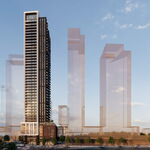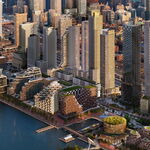Time for a massive reply dump.
You're comparing bus routes in suburbia to a downtown route. Stop with the bad faith arguments.
You said it yourself, higher frequencies. Seems easy to do.
Agreed. If there isn't demand for 5 minute frequency on a bus route, an LRT is a waste.
? You're trying to say something?
If London Transit can't do a good bus system, what makes you think they'll be competent at an LRT?
Outside of Alberta, which had so much money they didn't know what to do with it, no city of 500,000 could afford an LRT in the 1970s.
The stations are just large bus shelters. They could have been reused, had the city chose to do so, but they wanted level boarding. Source: living in Ottawa for a few years.
Ottawa's downtown segment was too successful and too high ridership. If that's failure, I want more!
Your argument was that we can't have BRT in urban areas.
Edinburgh and Seoul are also large cities. If they can do it, so can London.
No, because they would have had to build a tunneled ROW to get the capacity which they have now. That would have costed as much as the rest of the Transitway put together.
You can either have an overcapacity BRT or a useless BRT. Pick one, then stick to it.
The issues stem from poor maintenance, which a smaller system can easily have. If OCTranspo is that bad, imagine LTC doing it.
LRT would have the same problem. But right, it's a choo-choo, and
@micheal_can can't live without those!
I thought you said it was going to have low ridership because it's a bus which is for poor people?
Again, if they're bad at operating bus service, what makes you think that they'll operate good LRT service?
Operations > construction. If you can change the operations to get a similar result for less, then that's the way to go.
Isn't that ideal for a fixed-route LRT?
So? Is this a dick measuring contest? If not, then "they have it so we have to have it too" doesn't count as an argument.
And? What are you trying to say?
What are you trying to say?
You think LRT will be a success? I think you're just operating on bad-faith arguments.
LOL.
Really? Doesn't seem like it.
Is London going to rebuild the BRT for LRT? Or is this another fantasy scenario that you've farted up?
Is this more useless arguments with zero proof?
Please, if you're going to argue anything, provide
some sort of evidence.
Unless your precious LRT is getting those too, don't try to argue with that.
Why waste even more taxpayer money for an LRT that's going to have the same operational deficiencies?
It's clear that you think that LRT would run like Ottawa's while BRT would be like the Eglinton East lanes, while in reality, the LRT would run on the same lanes as the BRT.
It's clear that you've made contradictory statements about ridership.
It's clear that you think an agency which can't run buses well would run a train well.
It's clear that you haven't got any actual evidence for what you're saying, just a bunch of cobbled together anecdotes.






